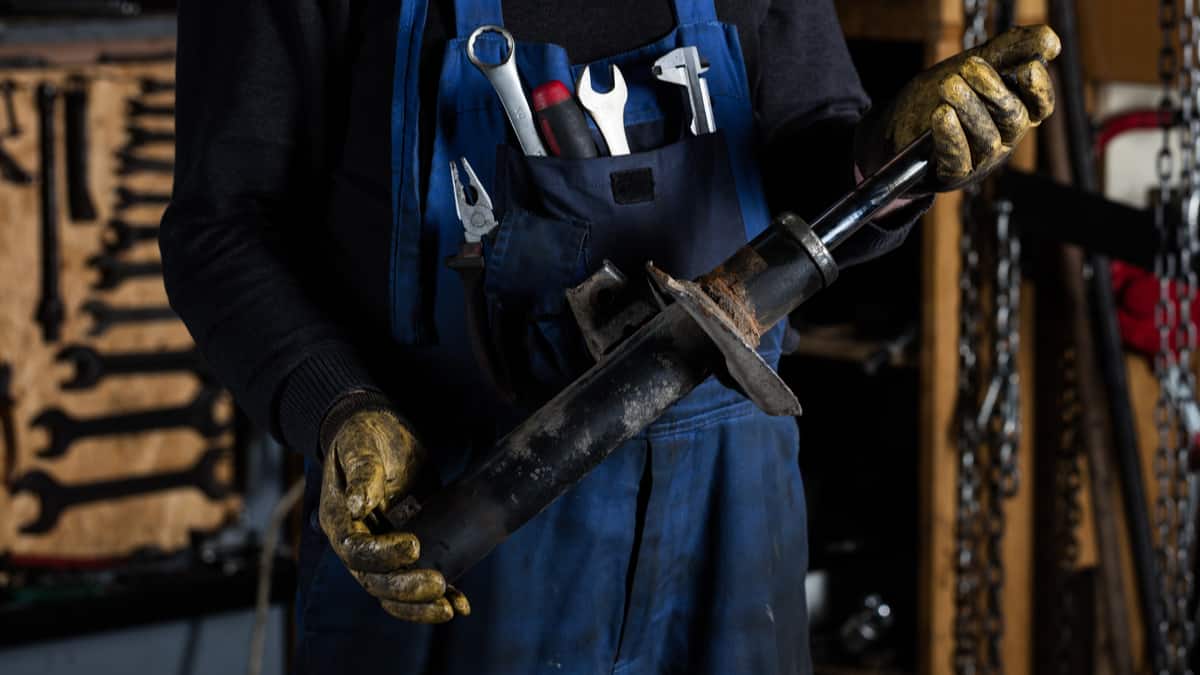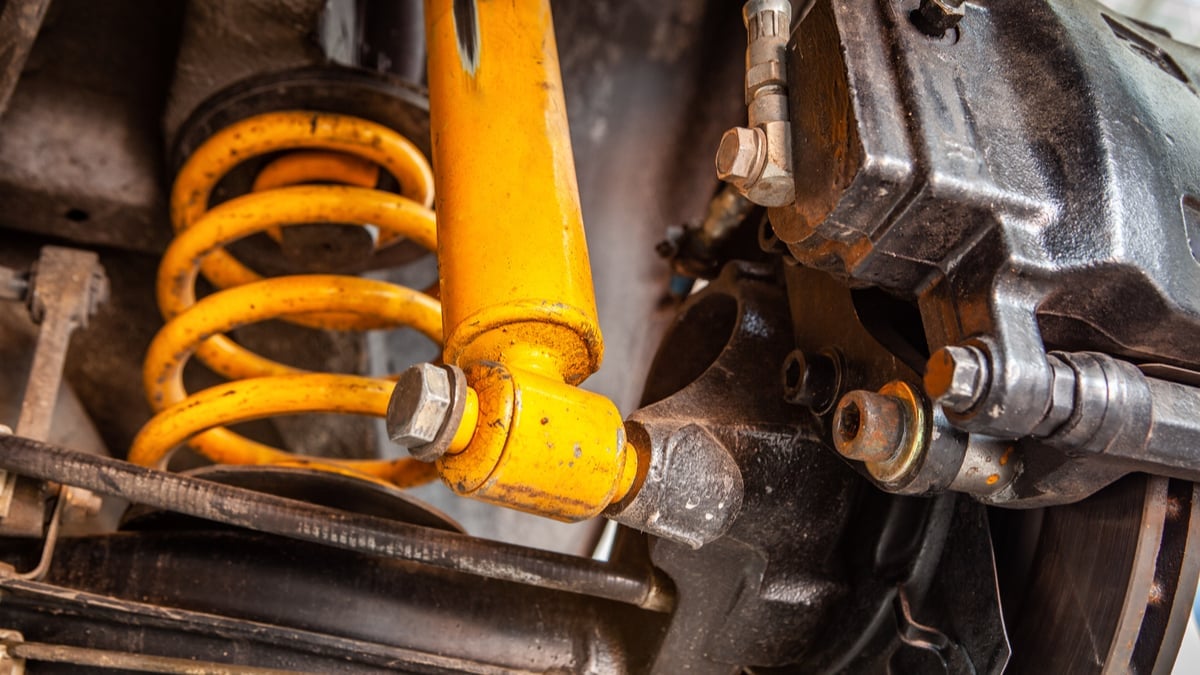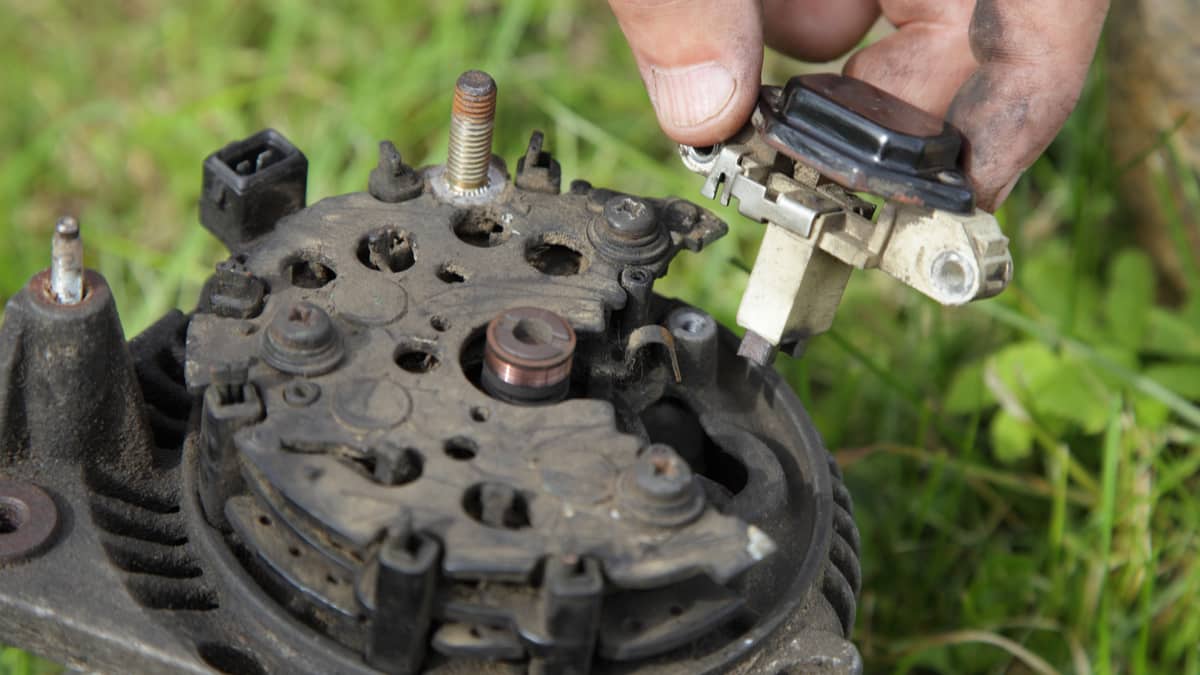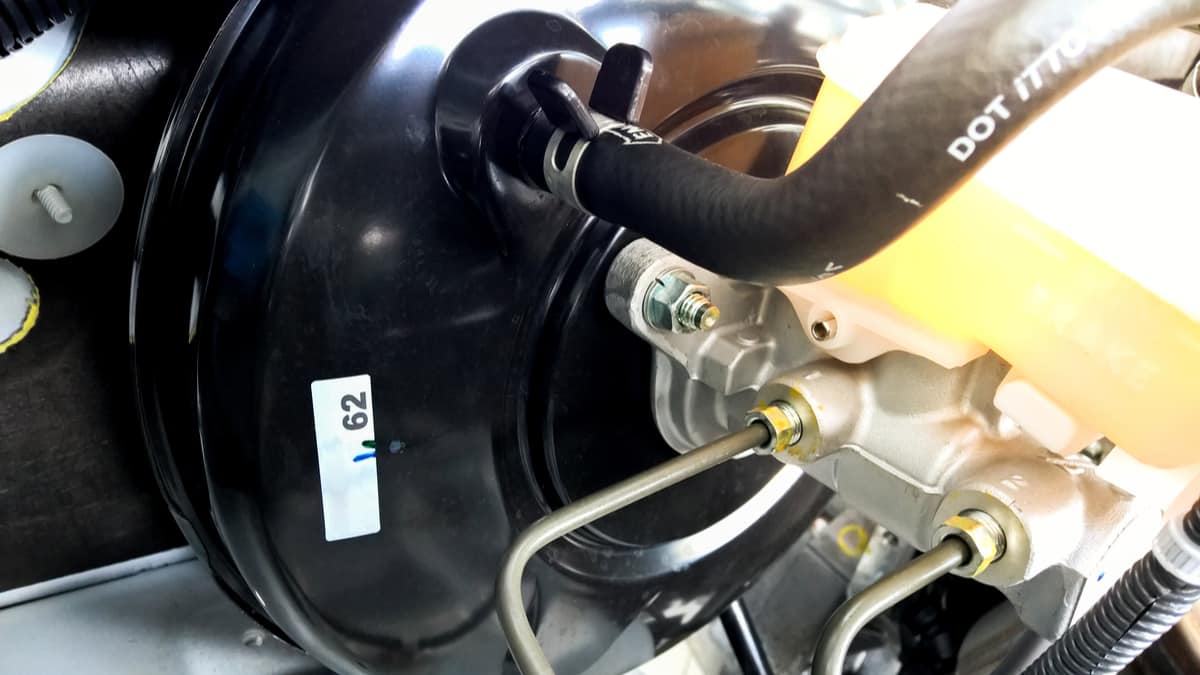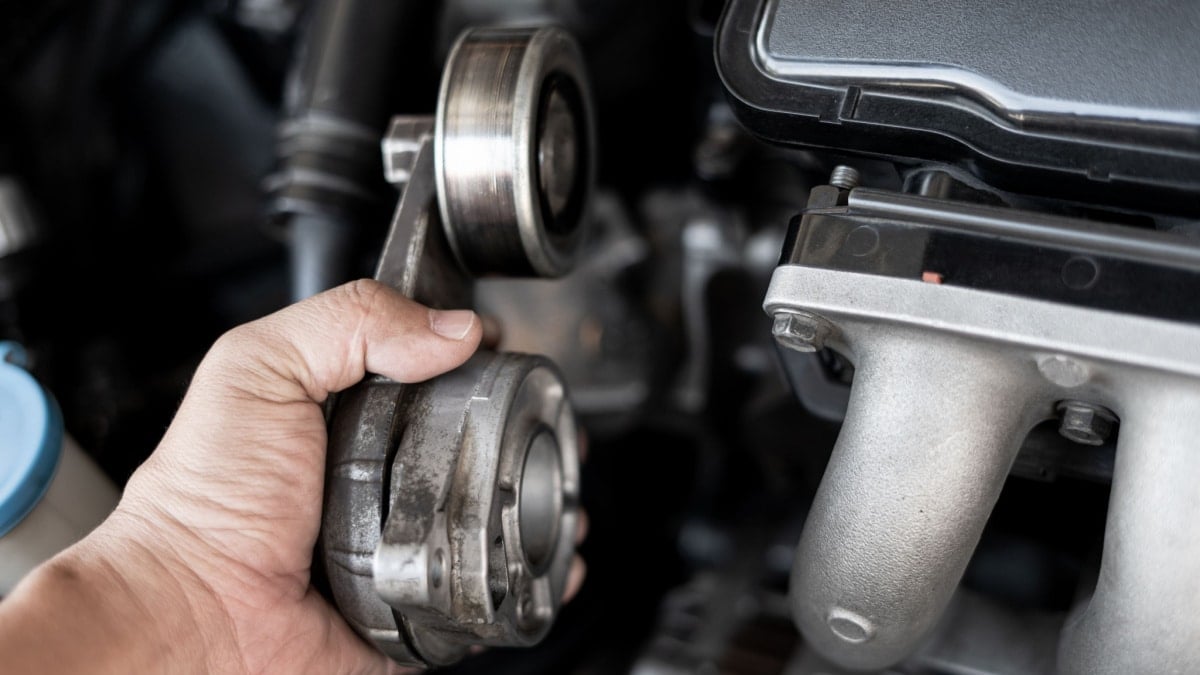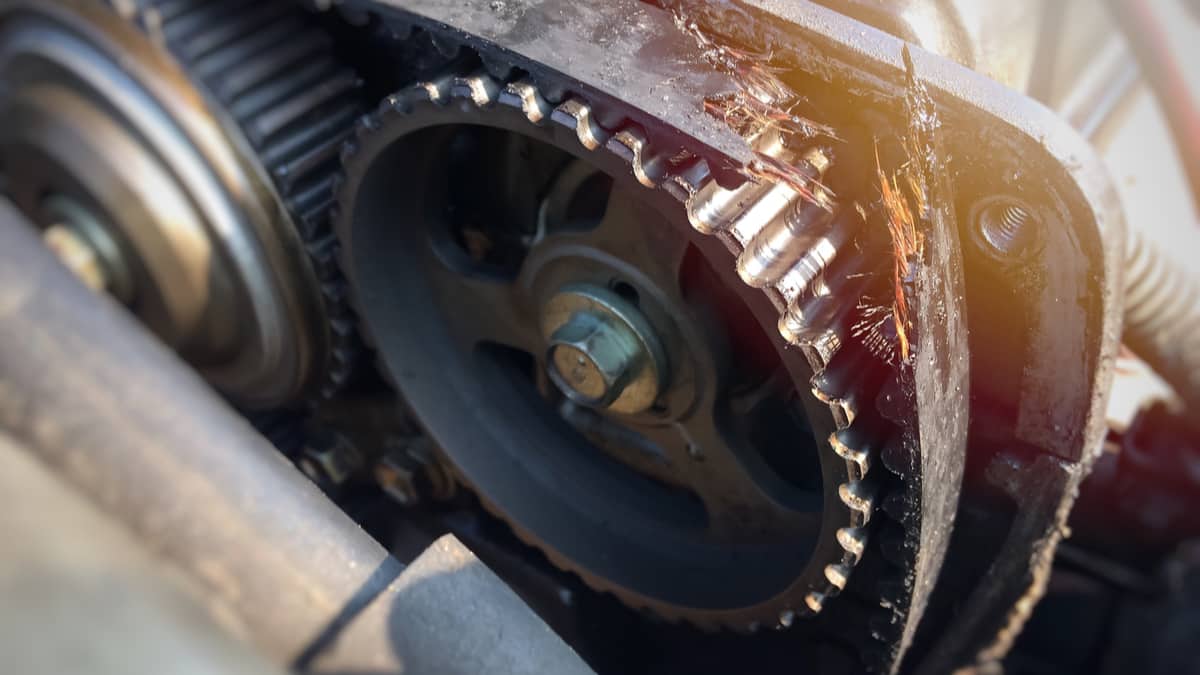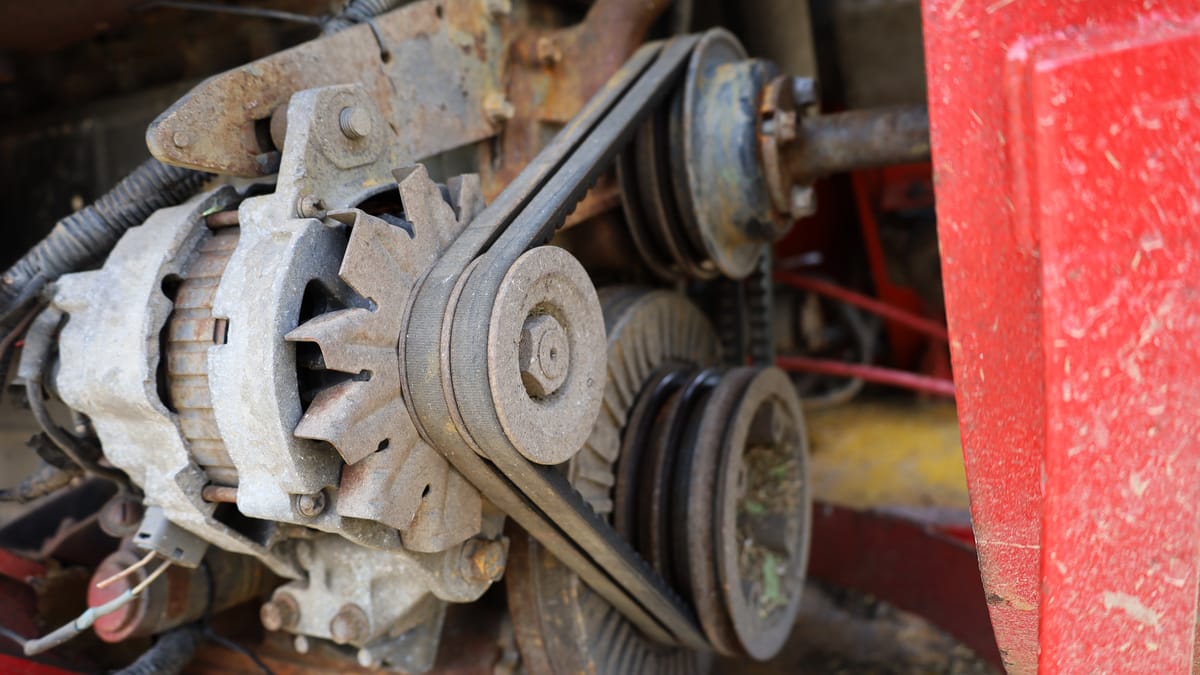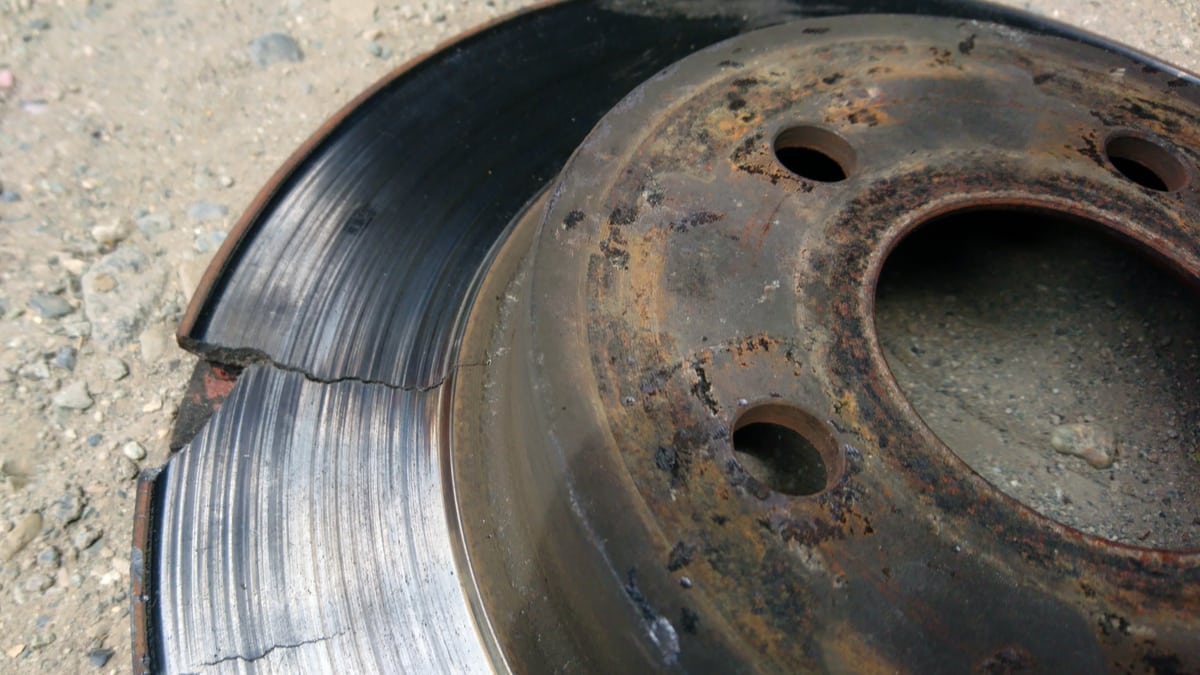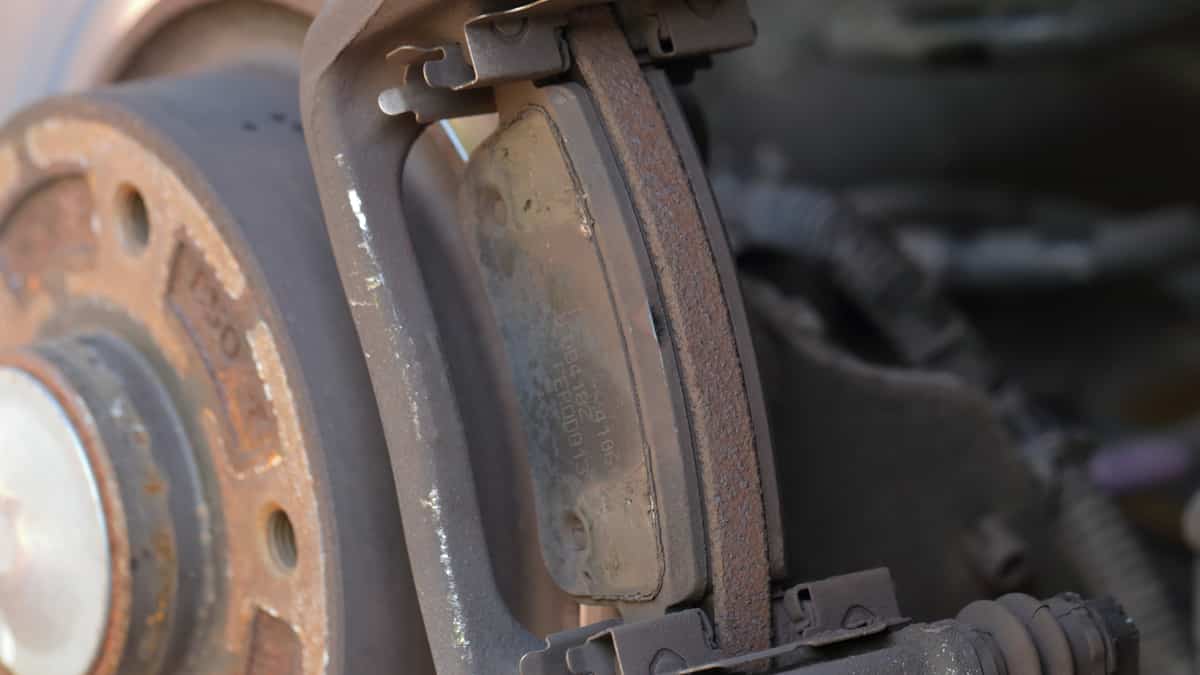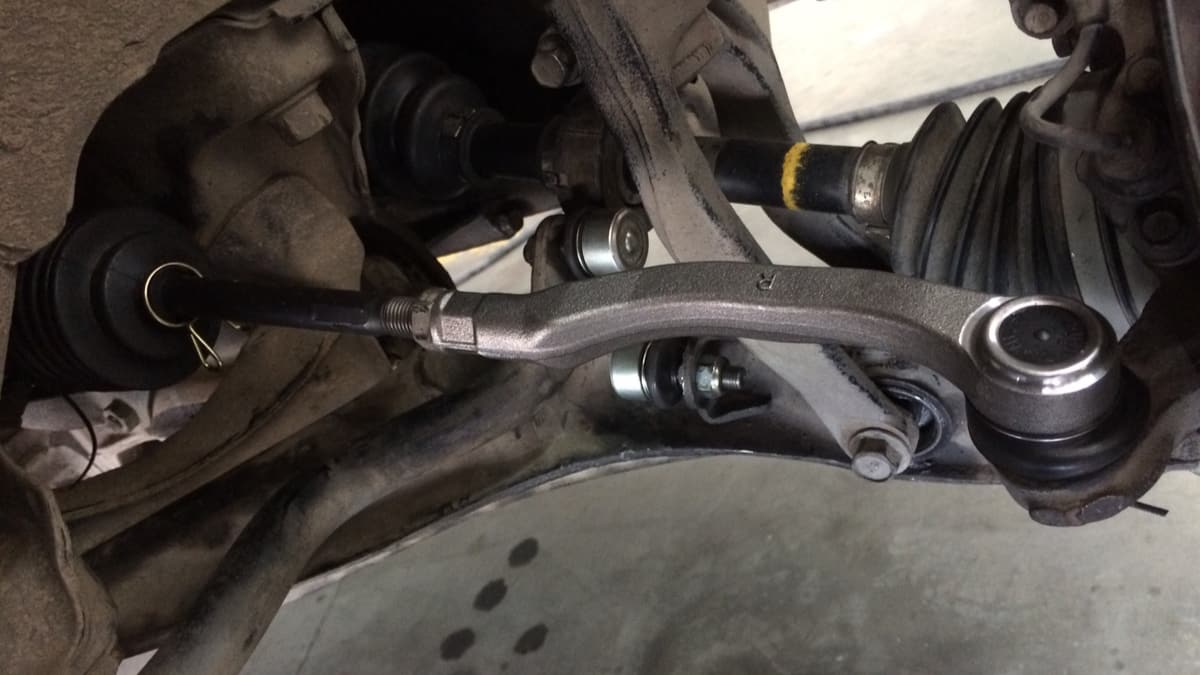Shock absorbers are meant to provide a smoother drive, especially when driving over bumps and imperfections. As with other car parts, these suspension components can wear down and break over time. Knowing the top bad shock symptoms and the replacement cost can help you save a lot of headaches as you travel.
In this guide, I cover all of the top bad shock absorber symptoms. I also discuss where to find the shocks and discuss this part’s purpose. At the end of this guide, you will find the average shock replacement cost explanation. I also end with some helpful hints to maintain your car shocks and you should gain helpful answers to some of your top questions.
Symptoms Of A Bad Shock Absorber
When the shocks go bad, you will experience longer stopping distances and uneven tire tread wear. The car can also take nose dives when braking or start to squat, and you will feel excessive vibration. Finally, bad shocks cause leaking fluid and strange rattling or squeaking noises.
Here is a more detailed list of the most common symptoms of a bad shock absorber:
1. Longer Stopping Distances

If it’s starting to take longer to brake, you may have a suspension problem. You may notice the change over time or suddenly, depending on what issue you are dealing with. With that said, this symptom alone doesn’t point to bad shocks. It can be part of many failing parts, including defective brake symptoms.
Shocks are meant to keep the tires planted on the ground. If they aren’t working, the tires may not stay on the ground, creating a bounce. When the tires are bouncing, it becomes much harder to stop when the brake pedal is pressed. If you don’t start braking soon enough, you could end up in an accident.
2. Uneven Tire Tread
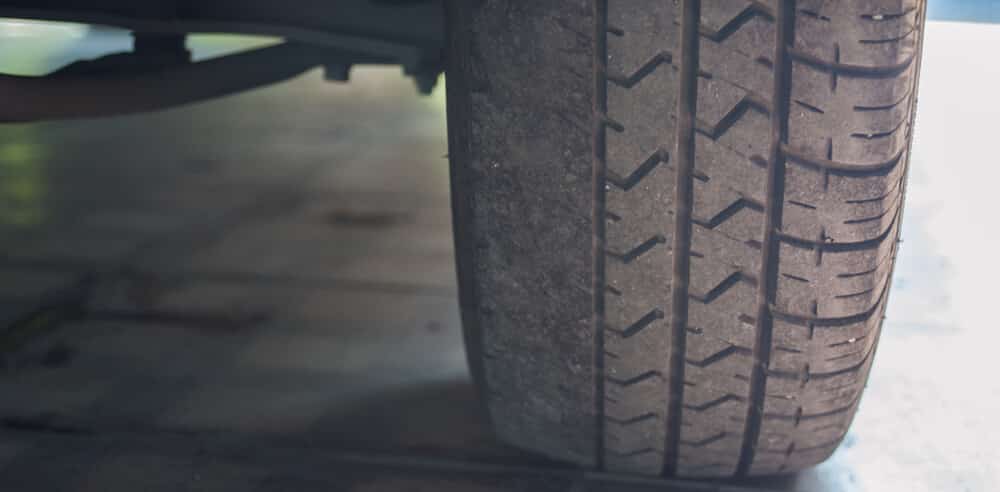
If there’s anything wrong with the suspension, the tires could start wearing funny. Again, uneven tire wear isn’t just caused by bad shocks, so you need to dig deeper into what’s going on.
The bouncing caused by the bad shocks can cause the tread to wear in an uneven pattern, leaving you to worry about tire replacement if you don’t resolve the issue quickly. It can also cause hydroplaning, which is a serious accident threat.
On the other hand, if the uneven tire wear is only happening on the edges or inner part of the tread, this problem shows that tires pressures aren’t right. This type of wear rarely occurs because of poor suspension components.
3. Nose Dives/Squatting
If the shocks are defective, the piston can move too much inside the cylinder. When you step on the brakes, the front of the car will start to dive. This happens because the car’s weight swings further than it should of when controlled by the shocks.
Additionally, the rear of the vehicle can squat for many of the same reasons. When you hit the accelerator pedal, you may notice the squatting because of the weak shocks. Depending on what you are currently doing in your vehicle, it could look odd to those around you.
4. Excessive Vibration
It’s normal to feel some vibration when you travel over uneven surfaces, even when everything is operating as it should. It’s when the vibrations can always be felt that you have a problem.
Faulty shocks are going to allow more vibration during your drive. You will feel the shaking in your steering wheel, even if you are driving across even and calm roads.
5. Leaking Fluid
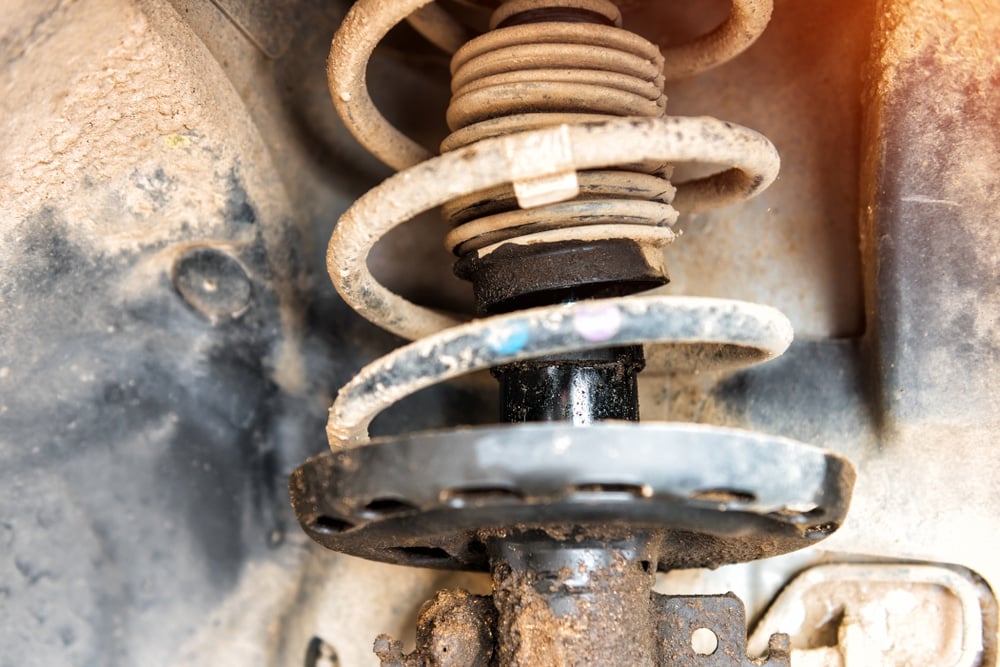
If a shock absorber breaks, you could see fluid leaking out. Normally, the fluid comes from around the seals that are part of the construction.
You may see oil dripping down the sides or a small patch on the ground. This oil doesn’t leak to the same extent as what’s in the engine. Still, without this oil inside the cylinder, the shocks are ineffective.
6. Strange Noises
With good shocks in place, there should be no strange noises when you hit a bump. The shocks are meant to dampen the up and down movements, so you don’t feel them or hear them. However, if the shocks or bushings start to wear out, you may hear more sounds because of the excessive vibrations we talked about earlier.
It’s common to hear rattling sounds when the shocks are bad. You can also hear some squeaking, depending on what’s failed and how bad it is.
Shock Absorber Location
Shocks are located behind the wheel of the car. Some cars have shocks behind every wheel, while others utilize struts instead. There can also be a mixture of the two between the front and rear wheels.
The easiest way to tell the difference between a shock and a strut is to look at how it’s mounted. The strut will be mounted to the steering knuckle and it contains an entire assembly, usually including a spring. On the other hand, the shock absorbers aren’t normally mounted to the steering knuckle. With both designs, you will see the strut or shock mounted with a series of bolts.
Shock Absorber Function
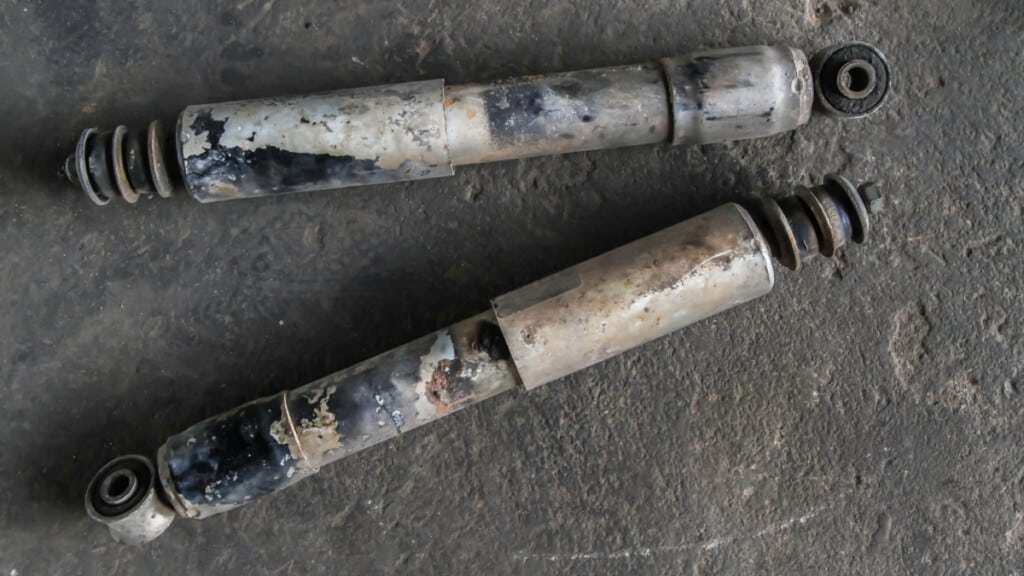
The modern shock absorber has many different functions including the dampening of the suspension. Shocks are needed to maintain road contact with the tires. By maintaining this contact, you have more control over the vehicle and you gain responsive steering.
If you didn’t have shocks installed on the vehicle, the car could fly out of control after hitting a bump. Instead of regulating the bounce after a bump, the car would continue bouncing and create an unsafe ride.
There are two main types of shocks. Monotube shocks have a case that acts as the cylinder, carrying the oil and gas separated by a floating piston. These shocks provide a stiff ride, allowing for more control. The twin-tube shock contains two cylinders. One is inside the shell casing, while the interior cylinder holds the piston valve.
Shock Replacement Cost
You should never replace a single shock. Instead, always replace them in pairs. For this reason, you could spend $200 to $750 to replace a pair of shocks on your car. This average cost includes the parts and labor charges. However, prices are going to vary by your region and the local labor rates.
Considering a shock absorber could cost you $50 to $175, depending on the level of performance and type of vehicle you drive, it’s clear to see that you could save money installing them at home. However, replacing shocks isn’t always easy, which is why you can expect to pay an average of $100 to $400 for a professional shop to tackle the job.
LEARN MORE: How Much Does A Shock Replacement Cost? (Front & Rear)
Shock Absorber Maintenance Tips
To avoid dealing with bad shock absorbers, you want to ensure you are following all of the recommended maintenance procedures. In addition to what you find in your car’s service manual, here are a few other suggestions.
- Have the suspension inspected. It’s best to let a professional inspect the suspension once a year or every 15,000 miles. This way, potential problems can be averted quickly.
- Check the tire pressures. If you keep your tires properly inflated, the suspension endures less wear. Check the tire pressures and adjust as needed every month. You should also check the tires when the weather changes dramatically.
- Avoid potholes and bumps. If you see a major bump on the road ahead, do your best to avoid it. The damage from potholes can take miles off of your shocks, causing you to need replacements sooner.
- Avoid excessive braking. If you are constantly driving in stop and go traffic, you are going to put more wear on the suspension. Look for a different route to ensure that you can maintain a regular speed. Otherwise, slow down gradually and avoid using the brakes too hard.
- Avoid corrosion. Water, snow and road salt can all wear on the suspension components. Try to avoid driving in these conditions. If you must, make sure you wash off the undercarriage with a hose afterward.
With some due diligence, you can avoid needing shocks too early. Spend a little time caring for your vehicle, and it will reward you with some astonishing savings on repair bills.
What Happens When a Shock Goes Bad?
The shocks are needed to maintain tire contact with the road. When the shocks go bad, the ride is going to become harder to control and maneuvering will become more difficult. You may notice that braking time increases or the vehicle dives and squats. Basically, you don’t maintain the same level of control over the ride.
Is It Safe to Drive a Car With Bad Shocks?
It might not seem important to change bad shocks right away, but this isn’t something you want to wait on. When shocks lose integrity, you can quickly lose control of the vehicle and find yourself in a dangerous situation. Additionally, bad shocks can lead to more suspension problems if they aren’t dealt with right away.
How Long Do Shocks Last?
The average shock absorber is meant to last between 50,000 and 100,000 miles. There are some high-performance shocks that might provide more life. On the other hand, if you drive aggressively or travel down uneven road surfaces, the shocks are bound to wear out quicker. A regular inspection will help you keep an eye on the wear.
How Long Does it Take to Replace Bad Shocks?
If you take your vehicle to the shop for shock replacement, you can expect to pay around two hours of labor. However, if there’s any problem getting the shocks on or off, you could be responsible for a higher bill. If you plan to replace them at home, it could also take longer because you probably don’t have access to the same equipment or expertise.
What Else Should Be Replaced with Shocks?
Unless another suspension component has failed, there’s no reason to replace anything else at the same time. The only recommended guideline is to replace shocks in pairs, so both front or both rear at the same time. You should do this even if the other shock doesn’t seem to be worn.
Once you understand the top bad shock symptoms, you know when it’s time to replace this vital suspension part. By paying close attention to how the car feels and handles, you will know when something is wrong. Additionally, having regular suspension inspections keeps you on top of what’s going on.
To ensure your ride remains smooth for you and your passengers, you want to use high-quality shocks and replace them at the first sign of wear. Not only will you appreciate the drive more, but you will ensure proper on-road safety.
Learn more:
- Average Strut Replacement Cost (Front & Rear) – By Model
- 6 Symptoms of a Bad Strut (Front or Rear)
- 6 Symptoms of a Bad Strut Mount (& Replacement Cost)
Categories: Suspension
